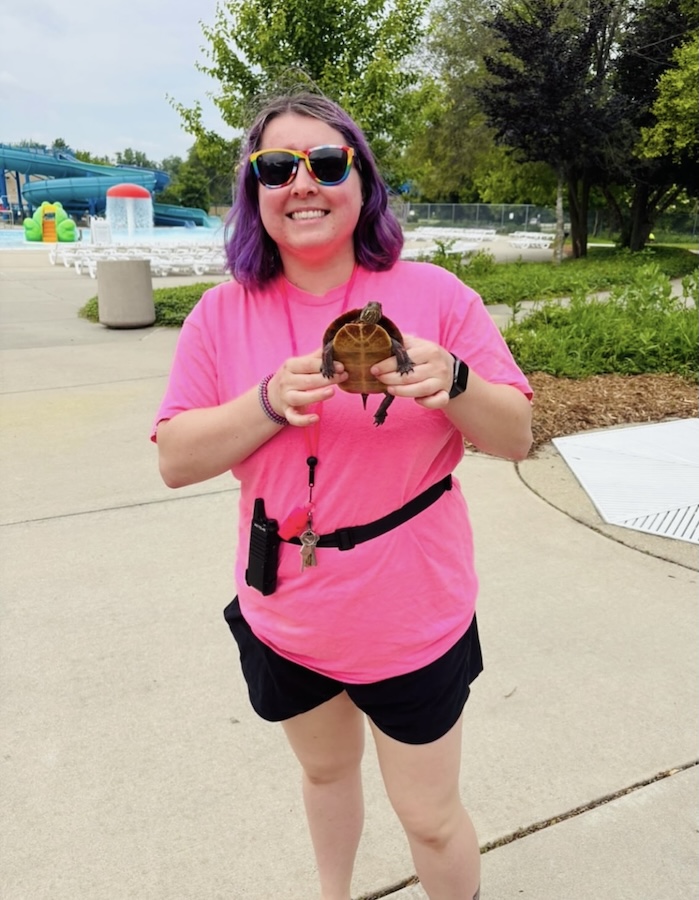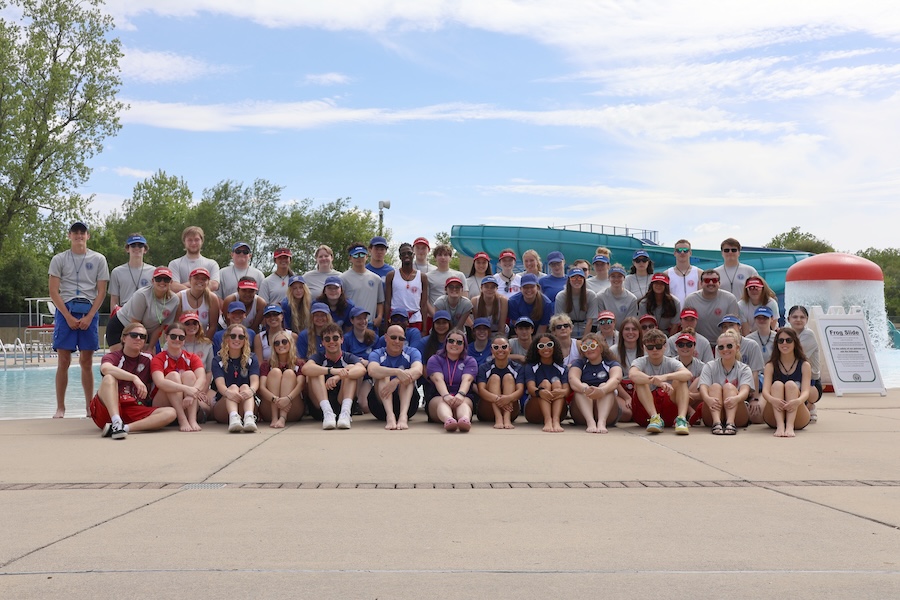East Lansing Lifeguards Save Lives On and Off the Clock
The East Lansing Aquatic Center may have closed for the season, but its employees never stop stepping in to help others. This summer alone, at least three staff members jumped into action off the clock to rescue strangers in danger.
Jim Jennings, the center’s operations manager since 2004, oversees hiring and training. He told ELi about the rigorous preparation lifeguards receive and introduced us to current and former staff.
Every summer, about 30 seasonal lifeguards earn a two-year certification from the American Red Cross. Their training goes well beyond the required 25 hours, with weekly 90-minute in-service sessions. Even slide operators and concession workers can opt to earn CPR certification.
Jennings said emergencies at the Hannah Community Center pool are rare, but the Aquatic Center sees plenty.

“We usually average about 95 days of operation over the summer,” he said. “This year we had over 100 water rescues. We called 911 four times.”
Most incidents involve bee stings or heat exhaustion, but larger emergencies do happen.
As Michigan has few lifeguards keeping its waterways safe at a state-wide level, many of the Aquatic Center’s employees most important moments have happened away from work.
“One staff member rescued two kids from a fast-moving river up north,” Jennings recalled. “Another lifeguard pulled children on an inner tube back from deep water at a lake.”
Jennings himself has been called to act. He once saved a nephew who slipped into deep water in a backyard pool, and he performed the Heimlich maneuver on a choking niece. While at a Disney waterpark, he spotted a child drowning in the slide area.
“Because I know the signs of distress, I just grabbed the kid,” he said. “The lifeguard saw it too, but I happened to be closer. You’re always alert. Even on vacation, you can’t relax—you’re trained to watch everything.”
Dana Kilponen, aquatics specialist for the City of East Lansing, made her own off-duty save at Michigan’s Adventure theme park in Muskegon.
“I was walking past some game booths and saw feet sticking out of a stall,” she said. “They weren’t moving. I rushed over and found an employee on the ground, unconscious.”
Without equipment, Kilponen relied on her training. She shouted for help, tapped the woman’s shoulder, and checked for breathing and a pulse.

“Her eyes started to flutter, and she began to regain consciousness,” she said. “I was glad I was there. I had no idea how long she’d been down.”
Former Aquatic Center lifeguards carry their training with them.
Dee Careathers, who worked at the Aquatic Center for 15 years, once used her jump kit to give oxygen to a woman in a car crash. Another time, she stabilized a pedestrian struck by a car until emergency services arrived.
David Dalen, a former lifeguard and instructor in East Lansing who now serves as a police officer in Arizona, credits the job with shaping his career.
“Lifeguarding is the best first job,” he said. “It teaches teamwork, de-escalation, and people skills. I’ve resuscitated people in the field, and firefighters have asked where I learned it all. I tell them: as a lifeguard.”
Both Jennings and Kilponen remind swimmers and parents to take safety seriously.
“Never enter the water alone,” Kilponen said. “Even strong swimmers can have a medical emergency. Non-swimmers should stay in shallow water, even with a life jacket.”
Jennings added, “Parents, please stay vigilant with your non-swimmers. Lifeguards respond to emergencies, but it’s your responsibility to watch your child.”

